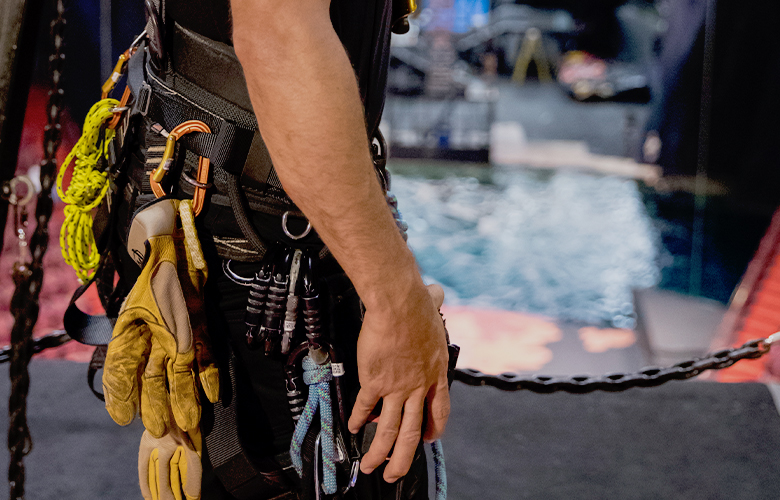Community, Leadership, Experimentation, Diversity, & Education
Pittsburgh Arts, Regional Theatre, New Work, Producing, Copyright, Labor Unions,
New Products, Coping Skills, J-O-Bs...
Theatre industry news, University & School of Drama Announcements, plus occasional course support for
Carnegie Mellon School of Drama Faculty, Staff, Students, and Alumni.
CMU School of Drama
Wednesday, September 25, 2019
Working at Height: What's In Your Rigging Kit?
TheatreArtLife: I’m headed on a rope access job in a stadium and putting together my gear. Stadiums are a fun climb and a great workout. Lots of stairs and a lot of trips up and down a rope. There’s a lot of risk with stadiums because you’re forced to make a lot of decisions that may have some big implications on your overall quality of life.
Subscribe to:
Post Comments (Atom)

3 comments:
This article provided a nice insight into what rope-access riggers have to do to prepare for their work. I’ve always been intrigued by watching time lapses of large-scale concert load-ins at big arenas where the riggers hoist up into the rafters on their ropes. It has left me curious as to what exactly they do up there and how they accomplish anything so high up, without easy access to toolboxes and such required things. However, this article clarifies this with a whole written out list of tools alongside a couple of images to supplement. The images really give and idea of how much these riggers heft up to the rafters with them, and it is completely understandable, seeing as how it would be a pain if you forgot the one tool you needed for a job two hundred feet below your suspended body. The riggers, once loaded up, look like they could safely go on a rock-climbing excursion. After googling some of the equipment listed, it is evident that much of the equipment is actually intended for climbers. All in all, very interesting and informative.
It is no surprise to me that so much of this gear was originally made for top rope climbing. Climbers are often gearheads and take great pride in having gear that is more than safe for what they are doing and works efficiently. This article led me to looking up SPART and what their organization does, and I found it rather fasteninating. I think it is interesting that there was no unified safety regulation over rope access work, but I guess when so many of the techniques are just the culmination what these gearheads have learned what to do and not do over the years – outdoors people tend to pass on advice from experience by word of mouth. I understand and second Dean’s curiosity of how to these technicians access and use tools on the job and in the air. I foresee many safety cables. I will add rope access occupations to the list of jobs I would not mind learning more about.
I really enjoyed this article because it is not often that you see a full article dedicated to rope access. I liked the tool kit nature of the article because it is a tool kit I have the least amount of experience with, but got to see a lot of this summer. Something that he mentioned throughout the article was being a rigger at a stadium, but I wish he would have contrasted the experience with that of rigging at an arena. Because arenas have more predictable layouts, conventions and access points, I would assume the rigging experience there is a different one. While I was familiar with some of the tools, I wish the article would have included pictures or a more thorough description of the tools application in the rigging process, or even the frequency of use. What is the difference between a tool often used and rarely used? I wasn't too clear from this article. All in all, I did like the article and thought it was unique in content for what's out there for entertainment articles right now.
Post a Comment